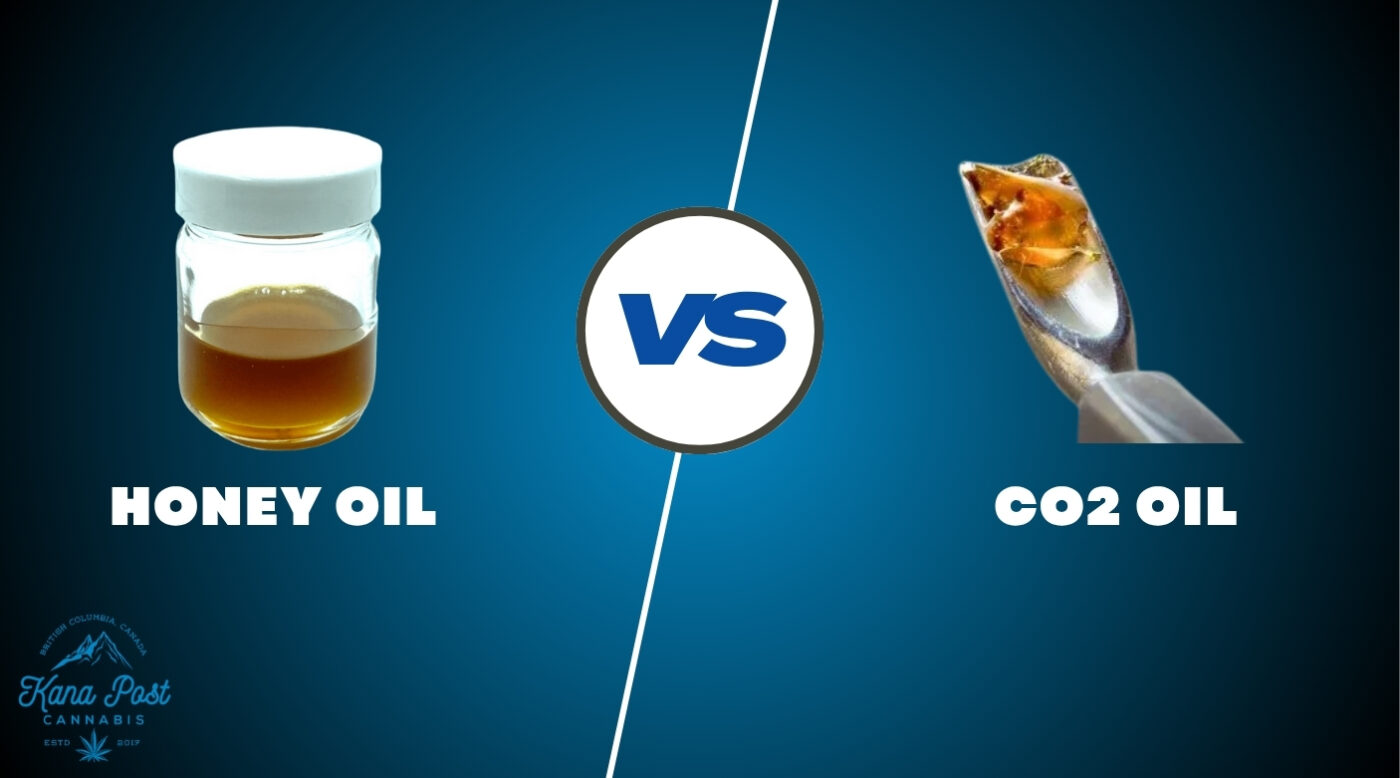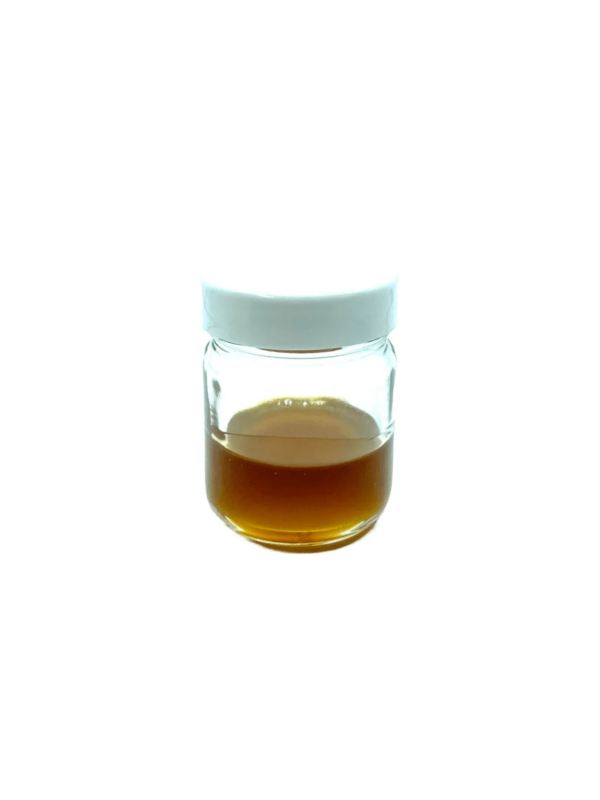Uncategorized
CO2 Oil vs Honey Oil | Effects, Uses, and Which to Choose
CO2 oil is cleaner and smoother, while honey oil hits harder and delivers full-body effects. Your choice depends on how you want to feel.
If you’re here, you’re probably weighing two of the most talked-about cannabis oils out there, which are the CO2 and honey oil.
If you’re new to cannabis, use it medically, or consume daily, and want more bang for your buck, this article is for you. I’m going to break down the real differences between CO2 oil and honey oil, how they’re made, how they hit, what to expect, and how to pick the right one for your needs.
What Is CO2 Oil?
CO2 oil is made using pressurized carbon dioxide to pull out cannabinoids, terpenes, and flavonoids from cannabis. This process is called supercritical CO2 extraction. The CO2 acts like a solvent but leaves nothing behind, no chemicals, no residue.
The smooth taste and terpene-rich profile make it a solid pick for anyone who vapes or dabs regularly. You’ll find it in cartridges, prefilled pens, or syringes that you can dose yourself.
It’s also known for keeping the plant’s original flavor. That’s because the process protects delicate terpenes instead of burning them off. You’ll notice the difference in full-spectrum options, they hold onto the strain’s natural flavor, aroma, and effects.
What Is Honey Oil?
Featured Product -> Premium Honey Oil Jars
Honey oil is one of the rawest, most potent cannabis extracts you’ll find. It’s also known as BHO, short for Butane Hash Oil. There’s also cherry oil, a darker, red-tinted version that’s made using a similar method but with slight variations in solvent or strain.
By making your own honey oil, you can use butane or ethanol to pull cannabinoids and terpenes straight from the plant. After purging out the solvent, what’s left is a thick, golden oil loaded with THC.
Honey oil works well for vaping, dabbing, infusing, or mixing with flower. A lot of medical users go for it because they don’t want to mess around with weak results.
Comparing CO2 Oil vs Honey Oil
CO2 oil is made using supercritical CO2 extraction. That means no harsh solvents, just pressurized carbon dioxide pulling out cannabinoids and terpenes.
Honey oil, on the other hand, uses butane, or sometimes ethanol, to break down the plant. It’s more old school, but it gets the job done. When it’s purged well, it’s solid. But if it’s rushed or sloppy, you could end up with trace solvents in the final product.
Now, let’s talk about the flavor.
CO2 oil tends to keep more of the original plant’s taste. It’s smoother on the inhale. Honey oil leans heavy, it hits fast, tastes bold, and leaves more punch on the exhale.
If you’re trying to stretch your stash, CO2 might last a bit longer. You’ll need more drawers, but they’re lighter. Honey oil burns hotter and faster, but you feel it quicker, so you might use less overall.
What About Distillate?
Featured Product -> Pure THC Distillate
It’s stripped of everything else during processing, including terpenes, cannabinoids, and flavor.
Now, is CO2 oil better than distillate?
That depends on what you’re after. If you want clean hits with a flavor that actually tastes like the plant, go with CO2 oil. You’ll get a mix of cannabinoids and terpenes, not just raw THC. It’s smoother, burns slower, and doesn’t feel synthetic.
Distillate hits harder in terms of sheer strength, but the high can feel flat. If you care about the entourage effect, how all compounds in cannabis work together, distillate won’t give you that.
Honey oil is the wildcard. It’s not as clean as CO2 oil, but it brings the full-body high and terpene punch that some of you are chasing. It’s thicker, stickier, and a favorite for dabbing.
CO2 Syringes and Their Purpose
CO2 oil syringes are made for control. You get to decide exactly how much oil you use and where you put it. No guessing, no waste. That’s why they work so well, whether you’re loading a vape cart, spiking a joint, or dropping a bit into a dab rig.
You can squeeze CO2 oil right onto your flower before rolling, or layer it in a bowl for a stronger hit. If you’re dabbing, the syringe makes it easier to portion cleanly, no mess, no sticky jars.
If you’re looking to mix oil with flower, go for something that has a thick but workable consistency. You don’t want it to flood or burn unevenly. CO2 oil checks the boxes, clean, strong, and smooth enough to play nice with dry herb.
Key Differences in Effects
CO2 oil usually contains between 60% and 75% THC. It’s smooth, balanced, and gives you a steady climb. You’ll need a few more pulls compared to honey oil, but the taste is way better.
Honey oil hits harder and faster, and when you’re looking at 70–80% THC, sometimes higher depending on the batch. You’ll feel it kick in within seconds when dabbing or vaping.
If you care about full-spectrum effects, how all the plant compounds work together, both oils can deliver. But here’s the difference, CO2 oil preserves those compounds cleaner. No re-added terpenes, no weird aftertastes.
Product Formats and Usage Options
When you’re deciding how to use honey oil or CO2 oil, the format makes a big difference. Each one hits differently depending on how you take it and what you’re using to do it.
Start with honey oil. You can dab it, vape it, infuse it into edibles, or use it in topicals. It’s thick, sticky, and comes loaded with flavor. A lot of people love it because you can feel the effects fast. Syringes make dosing easier, especially if you’re dealing with its gooey texture.
CO2 oil is smoother, it shows up mostly in vape cartridges, edibles, and those clean, precise syringes. This type of oil burns slower and often feels lighter in the lungs.
Now, let’s clear up the difference between cherry oil and honey oil.
Cherry oil usually runs darker, and sometimes deep red. Honey oil leans golden and a bit thicker, THC levels can be close, but honey oil often leans higher.
Some people are using the wrong gear and blaming the oil. Dab rigs work better with honey oil, especially the raw and unfiltered stuff. For CO2 oil, stick to quality carts or pens, it needs the right temp to stay smooth.
Choose Kana Post for the Right Oil
You’re here because you want to stop wasting money on mid-tier oils that don’t deliver. Whether you’re a medical user, a seasoned dabber, or just tired of carts that feel like air, this choice matters. CO2 oil gives you smooth control. Honey oil hits fast and deep. But what you really want is quality that feels worth it every time you light up.
That’s why we built this for users like you, the ones who want potency without the price games. You’re not looking for fluff. You want strength, purity, and clean effects that don’t let you down.
Here’s what you should try:
👉 Bulk Honey Oil Jars: Get heavy-hitting, terp-rich oil in 1g to 14g syringes. Perfect for dabbing, vaping, or stretching your stash. Choose strains like Death Bubba or Maui Wowie.
When you want to feel the difference, not just see it on the label, Kana Post is where you go next.
Which one should you choose?
If you want smoother hits, less smell, and a cleaner vape or dab experience, CO2 oil will probably work better for you. It’s cleaner to produce and tends to feel lighter on the lungs. If that matters to you, go with CO2.
But if you’re chasing heavier effects, deeper flavor, and something that hits fast, you’ll want honey oil. It brings the full-body experience. You taste it. You feel it. You don’t need much, and it gets the job done without overcomplicating the process.
That’s why we focus on honey oil. We’ve worked with some of the best growers and makers in BC to bring strains like Death Bubba and Maui Wowie in bulk. Our honey oil is strong, clean, and consistent, whether you use syringes, vape carts, or dabs.




